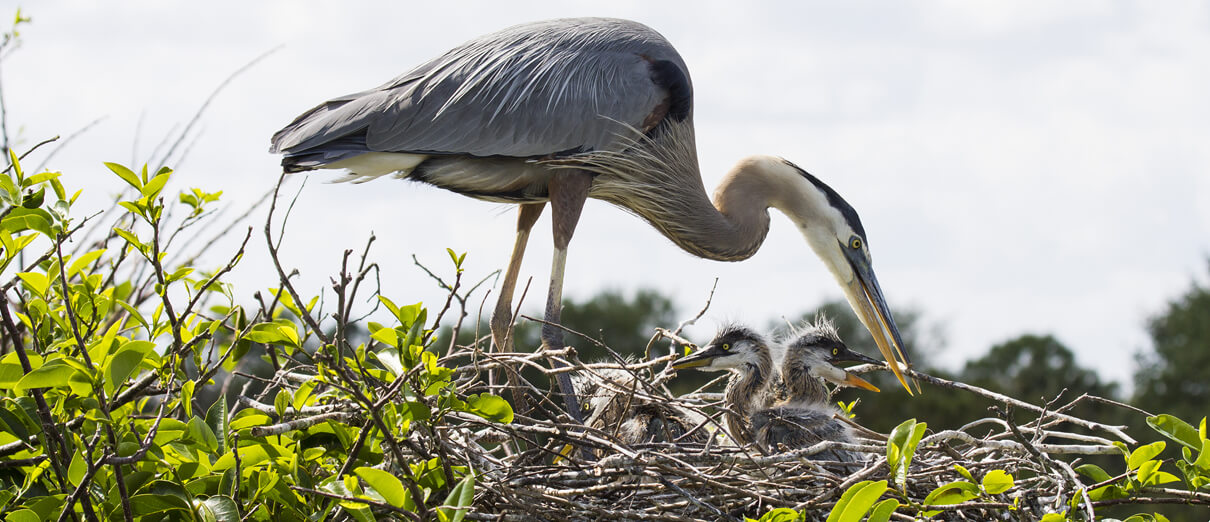Great Blue Herons are monogamous
during the breeding season, however, they form new pairs every year. The courtship process begins when the male decides on the location of his nest, and then stands there to attract females,
stretching his neck, spreading his neck feathers (nuptial plumes), and shaking twigs within his bills. He could also fly in circles around the possible nest location. When he has a chance to attract females, they will remain close through displays of including the twining necks, the clattering of bills, and the lifting of
their nuptial feathers. Males will offer branches and sticks to the female once she builds her nest, which is a rough-looking platform filled with soft materials like dry grass or moss.
After the nest is completed after
which the Female Great Blue Heron lay up to six eggs of pale blue while the parents both are incubating in turn for around one month. The hatchlings have eyes that are open and covered with down along with their heads and sides. Eggs hatch over a time of several days.
Therefore, nestlings typically are at different levels of development. The older nestlings are more likely to take their younger siblings’ lives or force them out of the nest, especially during times of food shortage. This seemingly cruel act is known as siblicide and serves an actual purpose: Texas Birds
If the food supply is sufficiently
available, more chicks are born; if not, only the most robust can make it to adulthood. Siblicide can also be seen in other species of birds like those of the Great Horned Owl, Red-tailed Hawk as well as the Brown Pelican.
The parents feed their offspring through the process of redistributing food. The chicks depart the nest within two to three months after the hatching. After the fledging stage, the fledgling birds are dependent on their parents to eat for the next about three weeks.
Persevering Despite the Obstacles
Great Blue Herons were hunted for their plumes up to the beginning of the 20 century. They were hunted for their plumes until the early 20th century. Over the last century, they’ve faced habitat destruction and disturbances Wetlands are being depleted, the quality of water has decreased and heron nesting activities
were disrupted by development and human-related recreational activities. While Great Blue Herons are adaptable and adaptable, the ongoing change in land use particularly in the vicinity of shorelines are a constant danger.
Locally the success of the Great Blue Heron
usually depends on the level of interest in protecting their delicate breeding colonies. Fortunately, in many regions nesting colonies flourish when they and the nests on sticks are left to themselves throughout the long nesting season.
American Bird Conservancy and other conservation organizations work across North America to protect and restore the ecosystems of North America’s wetland habitats as well as wildlife that make these areas their home.
Also Read
German Shepherd Rottweiler Mix





